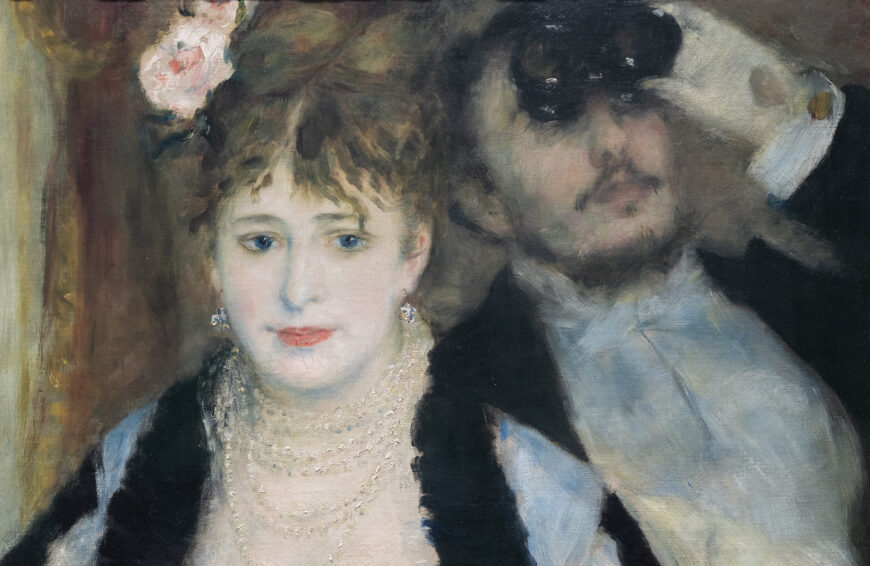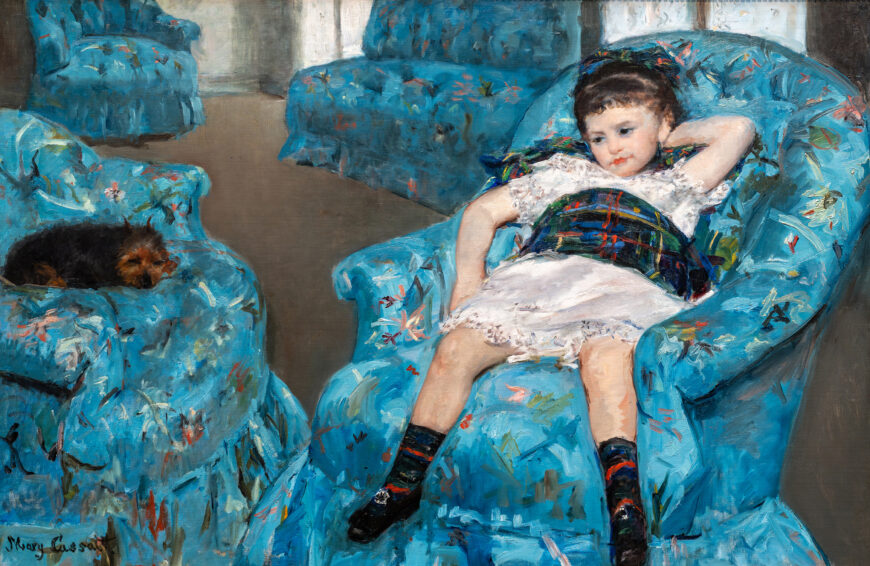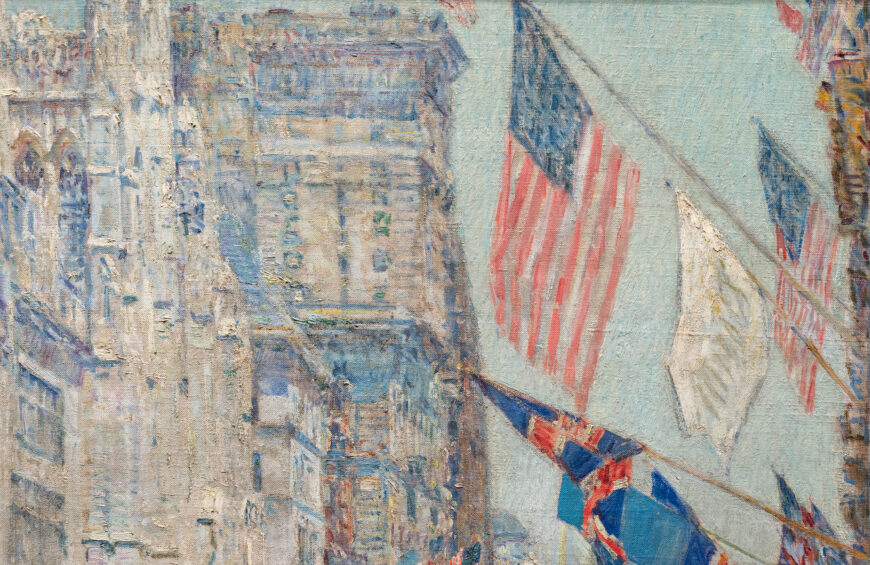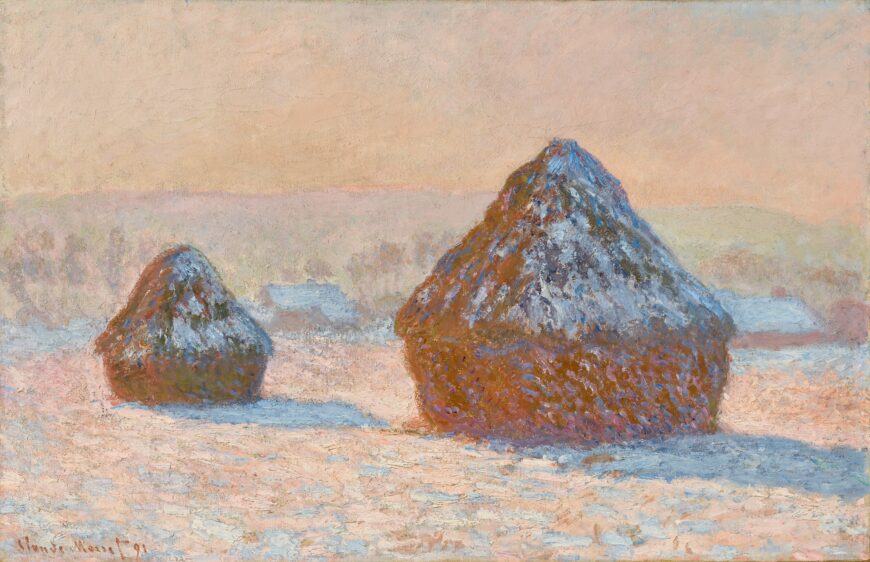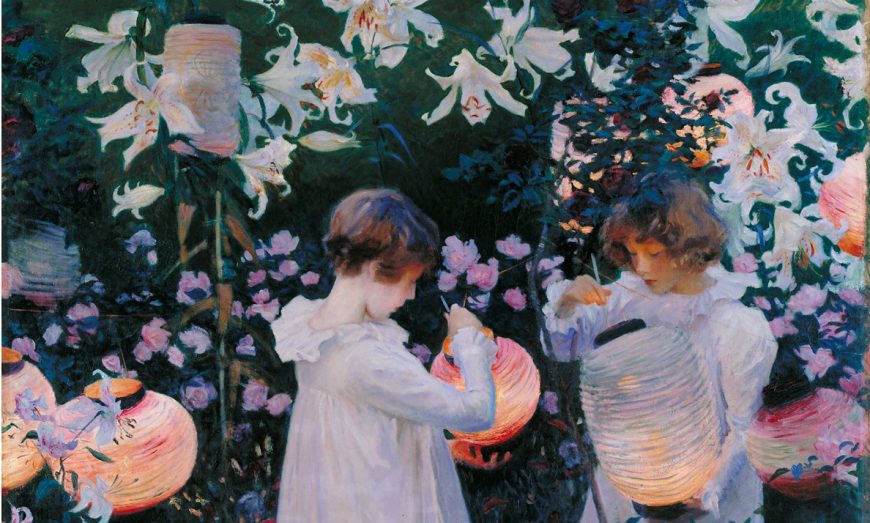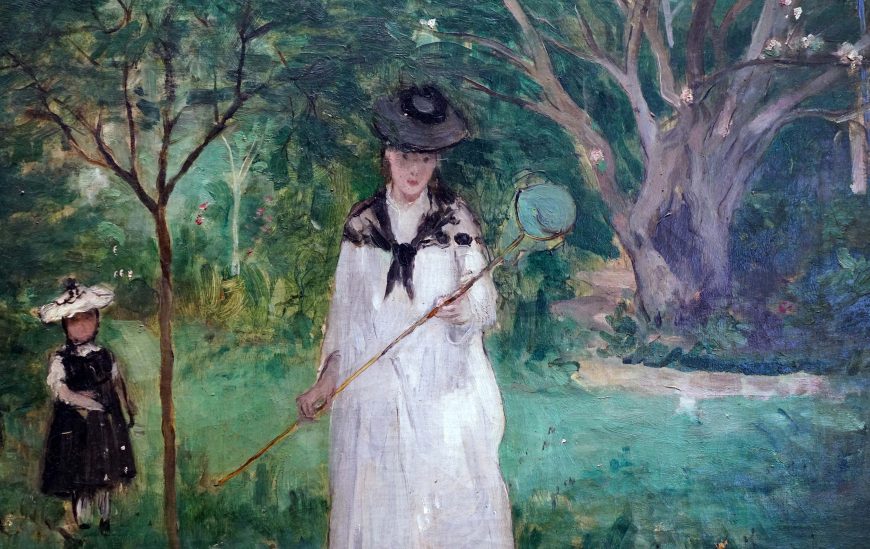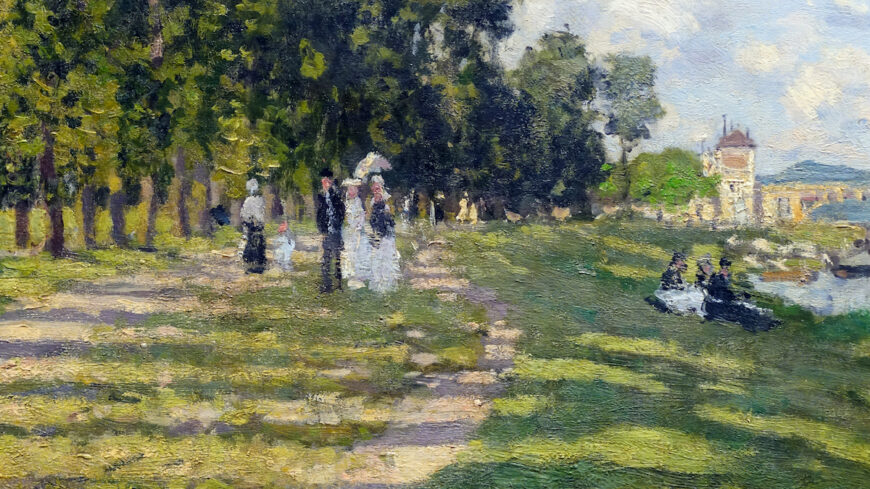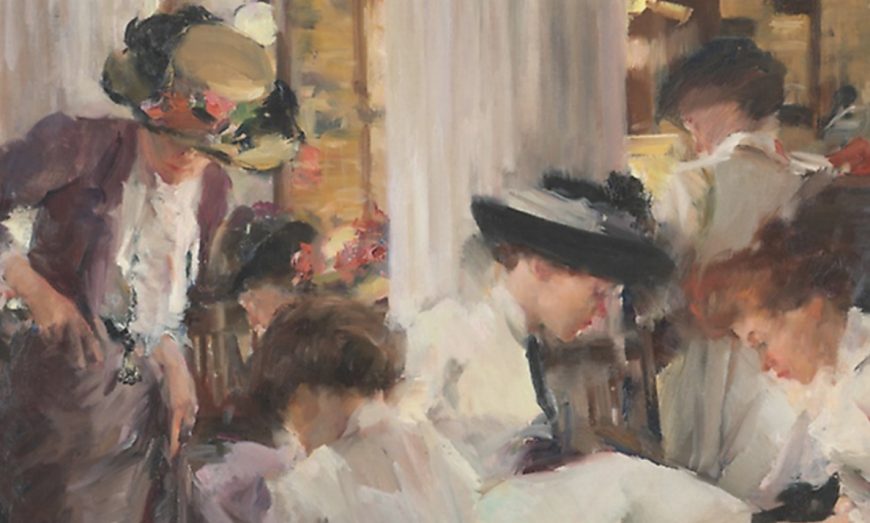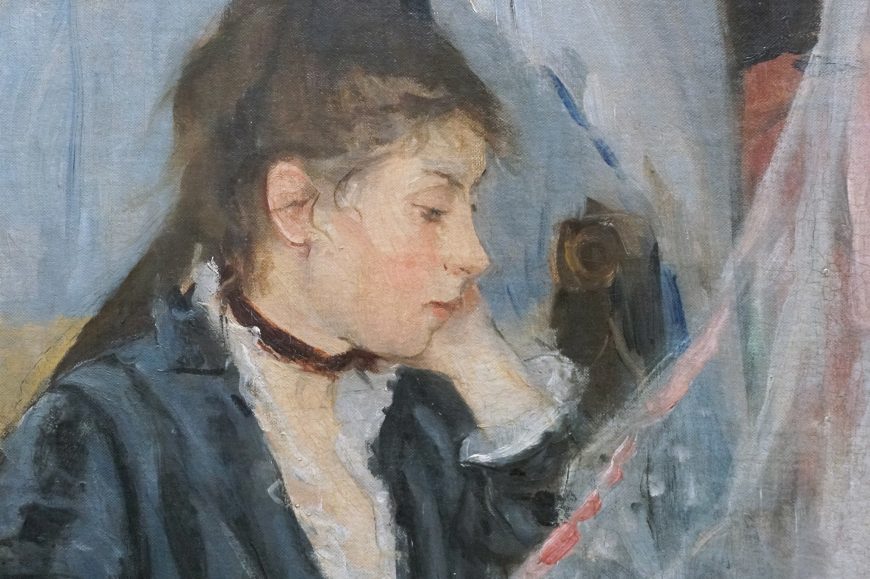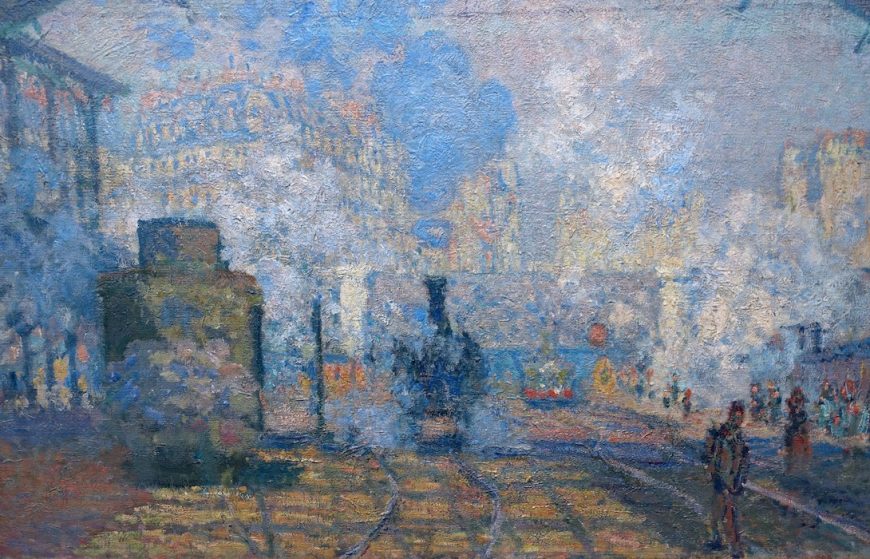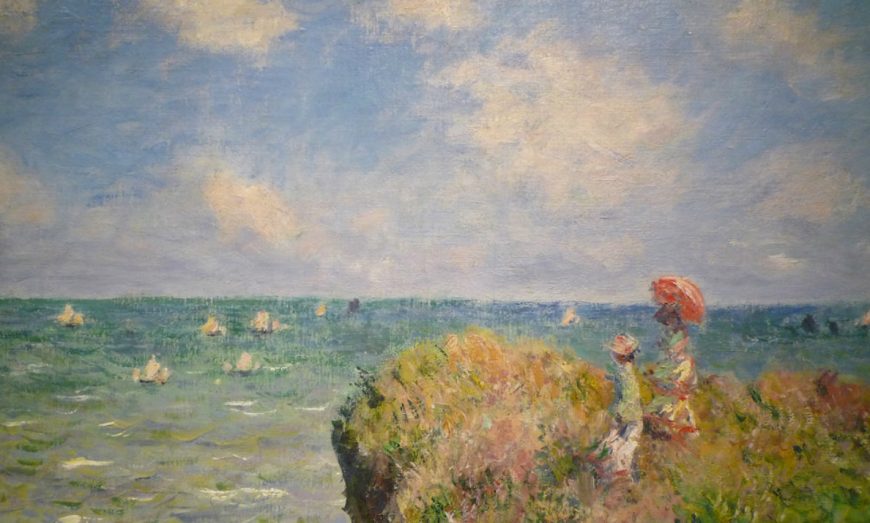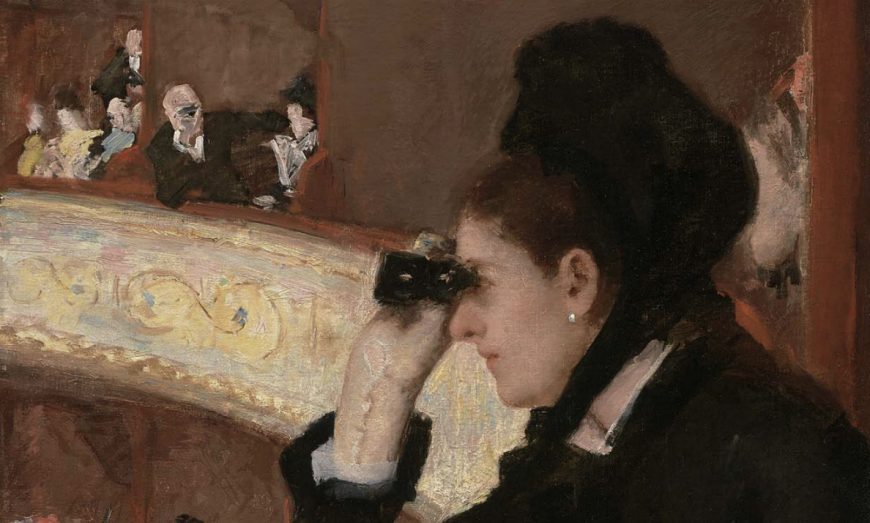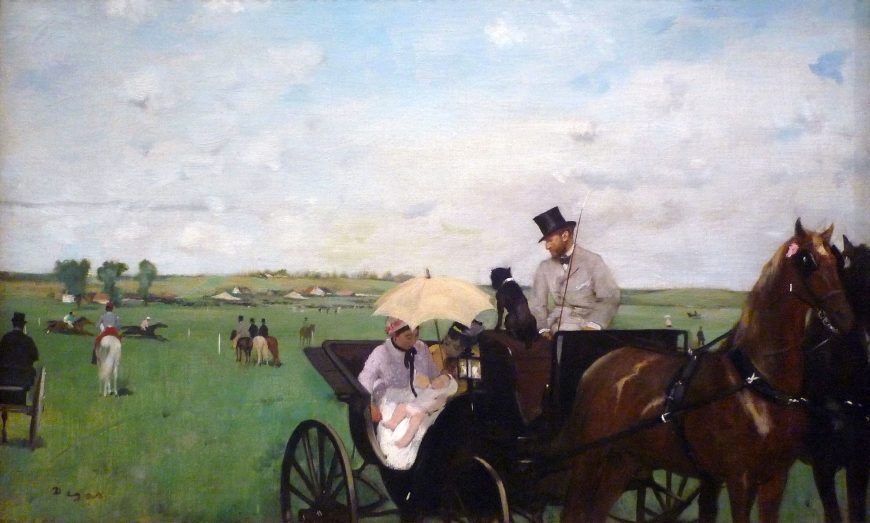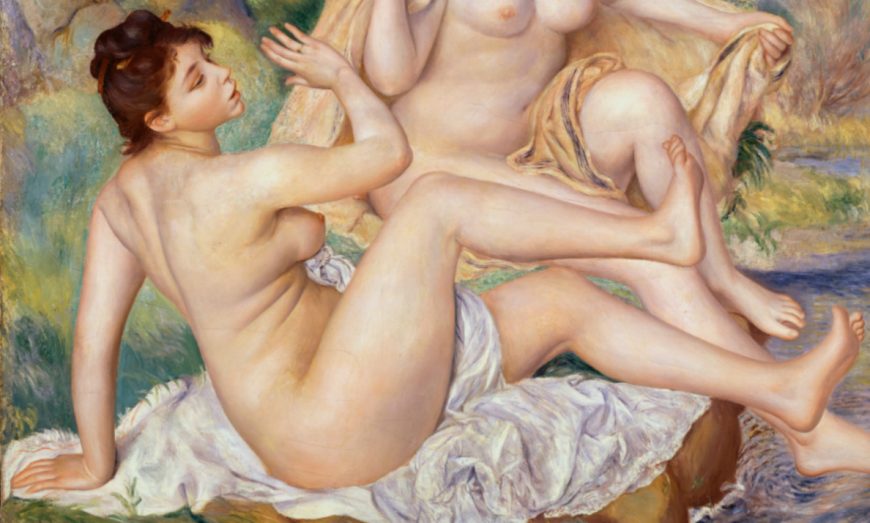Gustave Caillebotte, Paris Street; Rainy Day, 1877, oil on canvas 83-1/2 x 108-3/4 inches (212.2 x 276.2 cm) (The Art Institute of Chicago)
Gustave Caillebotte, Paris Street; Rainy Day
[0:00] [music]
Dr. Beth Harris: [0:04] When Caillebotte’s “Paris Street; Rainy Day” was exhibited in 1877 at the Impressionist exhibition, one anonymous reviewer wrote, “Caillebotte is an Impressionist in name only. He knows how to draw and paint more seriously than his friends.”
Dr. Steven Zucker: [0:21] Well, you know, when we think of Impressionism, we think of the countryside, light-filled summer, loose brushwork. And Caillebotte has given us this complex image of the subtlety of light in the city after a rainstorm.
Dr. Harris: [0:34] And without all of that loose, open brushwork. This reviewer is saying he knows how to draw. So there’s a sense of line, of contours, of forms that exist three-dimensionally in space, and that’s not what the Impressionists were doing in 1877. At that same exhibition, one could have seen Renoir’s “Moulin de la Galette.”
Dr. Zucker: [0:53] Which is full of light and movement and open brushwork.
Dr. Harris: [0:57] Or paintings by Monet of the Gare Saint-Lazare, where Monet concentrated on the effects of light through the steam in that railway station.
Dr. Zucker: [1:06] In fact so much so that even the massiveness of the locomotive dissolved within that atmosphere. But here, Caillebotte has given us a sense of massiveness. Look at the apartment buildings in the background. Look at the cobblestones. These are solid forms.
Dr. Harris: [1:20] Right. Nothing is dissolving into brushwork or light here.
Dr. Zucker: [1:24] And yet this painting is still all about light, but it’s about its reflectivity. It’s about shadow, and it’s about the way that light can define forms in a far more solid way.
Dr. Harris: [1:34] Caillebotte is painting modern Paris, wide boulevards that had just recently been built, and the modern apartment houses that lined those boulevards.
Dr. Zucker: [1:44] He’s also giving us the middle class that then populated the city. Look at how fashionably dressed the couple in the foreground are.
Dr. Harris: [1:50] Although we do seem to have some different types of people, if we look closely, we mostly see those fashionable upper-class or upper-middle-class people. But behind the woman to the right, just above her shoulder, we see someone who looks working class. And in the background, we see what looks like a painter carrying a ladder.
Dr. Zucker: [2:07] In fact, that was one of the definitions of the new modern city, was the way in which the lives of people of different classes crossed on the streets. This is a painting that really is about intersections.
Dr. Harris: [2:18] The rainy day, the yellowish gray of the sky, capturing a specific moment. Look at the sense of the reflectivity of the water between the cobblestones.
Dr. Zucker: [2:29] This seems so spontaneous, as if this is this fragment of time, this moment. Nobody seems to be posed. The main figures aren’t in the middle. Instead, the man on the right is actually cut off. We only see half his body.
[2:41] This would have been an aesthetic that would have felt very much at odds with classical art, and perhaps even would have been seen as coming out of the new vision of the photograph.
Dr. Harris: [2:52] These are all things that would have felt very radical to an audience in 1877.
Dr. Zucker: [2:57] And yet, although we don’t notice it at first, the painting is really carefully balanced and carefully composed. This is not a snapshot. If we look at the painting, it’s divided into four quadrants. You’ve got that vertical division in the middle of the canvas, then right at the level of the woman’s mouth moving across, then at the bottom of the apartment in the background.
[3:16] You’ve got a painting that was divided into four areas, and there is a sense of stability and balance, even though it’s still asymmetrical. For all the seriousness of the issues that we’re talking about, this is a really playful painting.
[3:29] For instance, look at the man who’s clearly in the middle ground but seems to be popping off the red wheels of that coach that we see in the background. There are these playful juxtapositions that Caillebotte is very intentionally placing in here.
[3:43] That speaks to the way in which the modern world has become a complex jumble. The way in which things come together in relationships that are unexpected.
Dr. Harris: [3:53] And fragmentary and ephemeral. These are all things that felt very modern in the 1870s.
Dr. Zucker: [4:00] But he’s having fun with them. Look for instance at the legs that are dangling from the umbrella held by the man in the center of the painting.
Dr. Harris: [4:07] Caillebotte continued to paint urban themes, though he died rather young, when he was in his 40s. He was independently wealthy and so had no need to sell his paintings.
[4:17] Throughout his life, he collected the work of his friends, of the Impressionists, and amassed a remarkable collection that he left to the French state. His collection forms the heart of the great works that we see today at the Musée d’Orsay in Paris.
[4:33] [music]
| Title | Paris Street; Rainy Day |
| Artist(s) | Gustave Caillebotte |
| Dates | 1877 |
| Places | Europe / Western Europe / France |
| Period, Culture, Style | Impressionism |
| Artwork Type | Painting |
| Material | Oil paint, Canvas |
| Technique |
Loading Flickr images...


